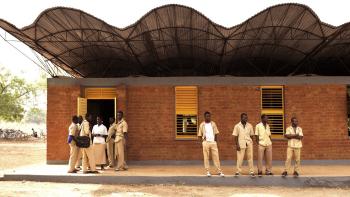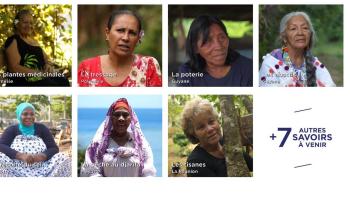1. It pushes countries to take climate change more seriously

The scale of the climate crisis requires a decisive and swift response by all countries. However, many countries do not treat it as a priority, either because of the costs that this would involve or simply out of a lack of interest.
Development aid helps to deal with both factors. By providing subsidies for reforestation projects, for example, by granting an attractive loan to fund the energy transition or by offering expertise in identifying areas in which greenhouse gas emissions could be reduced, it can push countries to take climate change more seriously.
More and more banks and development agencies, including AFD (Agence Française de Développement), are also choosing to adapt their funding programs to the Paris climate agreement. This is pushing countries wishing to benefit from financial aid to make their projects "low-carbon" and resistant to climate change.
2. It promotes the economic benefits of an ecological transition

Adapting societies to reduce their impact on the climate cannot be done without the appropriate investment. The good news is that these ecological transitions also provide excellent economic and social opportunities.
They create jobs, point businesses towards new markets and diversify sources of income. This then has an impact on education, healthcare and access to essential services. By clearing the way for innovative projects, these investments help to build a society that is not only fairer and more sustainable but also more prosperous.
3. It enables certain countries to adapt to climate change

Despite the fact that some countries do want to preserve the environment because they are in a vulnerable position, such as small island states, they do not have the required expertise to prepare themselves for the impacts of climate change.
Thankfully, there are many development banks that can provide this technical support on a daily basis and have been doing so for several years. As part of its "Adapt'Action" initiative, AFD currently provides advice and support to 15 countries, especially in the Caribbean and the Indian Ocean. For example, AFD is helping the government of Mauritius to implement a national flood-risk forecast and response plan.
4. Without it, some countries would not be able to fund their ecological transition

Transforming the transport, energy, agriculture, finance and industrial sectors to bring them in line with the climate challenge is an expensive process. Funding is often difficult to find, because investors consider projects to be risky or the country in question is not favored by the financial markets.
These are all obstacles that public development aid can help to overcome, by granting funding to the actors in the ecological transition at an affordable price - when it is not simply a question of donations. It is therefore a necessary tool for economic and social change.
5. It makes it possible to support non-governmental actors

It would be wrong to neglect the importance of non-governmental actors (local communities, charities, businesses, trade unions, etc.) in a society's progression towards a low-carbon model. The problem is that they often lack financial resources.
This is when development banks come in, which provide them with a large part of their investments so as to steer them towards sustainable solutions or support pioneering projects. The NGO CIPCA has benefited from a subsidy of €2m granted by AFD in 2015 to promote agro-ecology in Bolivia. The results are already proving positive (see the project's page).
6. It shows financial institutions how to proceed

Banks are sometimes reluctant to fund climate projects. This could be due to a lack of interest or because they still do not have the required expertise. Public development aid can also provide support in this respect.
With schemes such as Sunref, AFD's green finance label, we push local financial institutions to fund energy efficient buildings, beneficial farming methods or solar energy by providing them with loans and technical assistance.
In 2009, AFD granted three South African financial institutions with a €120m line of credit to fund renewable energy and energy efficiency projects. It is an initiative which has encouraged them to continue supporting these sectors.
7. It can create a snowball effect among other investors

If public development aid can do a lot to combat climate change, the private sector (banks, businesses, philanthropists) can do even more because of the huge amounts of money they can invest in developing countries. The challenge is therefore steering a considerable part of private investment in the direction of an ecological transition.
By playing an active role in the coalition of philanthropists launched last December at the One Planet Summit, AFD is helping to get a large group of investors to commit to three key areas for the climate: renewable energy, air quality and farming. This is a crucial movement which is bound to keep growing.
READ ALSO :
In South Africa, hospitals are caring for their carbon footprint
Sea levels rise: "We won't be able to build dikes everywhere."














